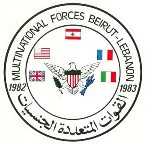BeirutDude
Posts: 2625
Joined: 4/27/2013
From: Jacksonville, FL, USA
Status: offline

|
quote:
Complicated question. It depends. In the US Navy, there's something called Composite Warfare Commanders (CWC). Around a protected high value unit (HVU), they define three layers. Outermost is the sensing area (SA). The next layer in is the classification, identification and engagement area (CIEA), and innermost is the vital area (VA). The idea is to sense things a long way away in the SA, then act on them in the CIEA them before they enter the VA where they can threaten your HVU. If goal is to defend the HVU from warships, then the decision making would fall to the sea warfare commmander (ZULU).
Depending on how the aircraft are apportioned (which involves horse trading among the various commanders, especially the WHISKEY, who is responsible for air defense), it may be the case that the ZULU has several fighters sitting on the deck with ASCMs on the wings, waiting to be tasked to go strike a target in the CIEA. In that case it's very much "arm 'em up boys, go get 'em." In that case, there's different levels of alert, which determines how much warning the pilots would get before having to take off. Effectively, armed aircraft in CMO are at the highest level. These days, they might receive the mission briefing in flight. The Navy is a little weird, though, because who is the commander at any one moment can change and many people have several bosses. As one really badass Navy captain once told me, "It's the Navy, it's squishy!" A good example of that is the Navy SUCAP mission, which is very unique. In that case you're working for both the ZULU and the WHISKEY.
As far as the apportionment of weapons to each target, it also depends. Some weapons need more specific targeting information passed to them. Some weapons can by easily allocated dynamically in situ. Others might need to be specifically configured on the ground. Still others can be passed information in flight using datalinks. Many advanced cruise missiles can do some really impressive things if they have the data to support them. It might also depend on the desired effect by the commander. The way you would apportion weapons might be different if you wanted to maximize the probability of sinking the vessel versus only achieving a mission kill. Maybe some of the ships in that group are more important than others? If the target is an enemy amphibious group, I might not care about the escorts at all, so long as I sink or disable the amphibs (and thus achieved a mission kill). A lot of this stuff isn't so much a failure of the simulation, though. It's a symptom of sloppy thinking by either the player or the scenario designer regarding what their desired effects might be. Not all ASCMs can be that precise, though. Older stuff might go after the first thing it locks on to. More modern stuff might be more discriminating. That doesn't mean the desired effect changes, necessarily though. It just means that you might be constrained somehow in your firing parameters because you want to make sure that the thing you really want to hit is the first thing that the weapon sees. Usually, when you plan a strike mission, the first thing you do is determine the desired effects on the target, and then plan backwards from there.
Does that answer your question?
Good stuff! Thanks.
_____________________________
"Some people spend an entire lifetime wondering if they made a difference. The Marines don't have that problem."
PRESIDENT RONALD REAGAN, 1985
I was Navy, but Assigned TAD to the 24th MAU Hq in Beirut. By far the finest period of my service!
|
 Printable Version
Printable Version








 New Messages
New Messages No New Messages
No New Messages Hot Topic w/ New Messages
Hot Topic w/ New Messages Hot Topic w/o New Messages
Hot Topic w/o New Messages Locked w/ New Messages
Locked w/ New Messages Locked w/o New Messages
Locked w/o New Messages Post New Thread
Post New Thread